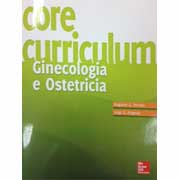341. Does methotrexate (MTX) dosing in a 8-day MTX/FA regimen for the treatment of low-risk gestational trophoblastic neoplasia affect outcomes? The MITO-9 study.
Mangili G, Cioffi R, Danese S, Frigerio L, Ferrandina G, Cormio G, Rabaiotti E, Scarfone G, Gadducci A, Bergamini A, Pisano C, Candiani M.
Gynecol Oncol. 2018 Dec;151(3):449-452. doi: 10.1016/j.ygyno.2018.09.025. Epub 2018 Sep 26.
Abstract OBJECTIVE: To compare clinical outcomes of patients diagnosed with low-risk gestational trophoblastic neoplasia (GTN) receiving intramuscular methotrexate 50 mg total dose/day versus 1 mg/kg/day in a 8-day methotrexate/folinic acid (MTX/FA) regimen. METHODS: This retrospective, multicenter study included 176 patients: 99 (56%) receiving methotrexate 50 mg total dose/day on days 1, 3, 5, 7 alternated with FA 7,5 mg on days 2, 4, 6, 8, every 14 days (group A); and 77 patients (44%), receiving methotrexate 1 mg/kg/day on days 1, 3, 5, 7 alternated with FA 7,5 mg on days 2, 4, 6, 8, every 14 days (group B). Patients’characteristics and outcomes were compared by univariate analysis. RESULTS: Forty-five patients (25.6%) developed resistance to MTX and received a second-line treatment, 7 (4%) received a third-line treatment and 8 (4.5%) relapsed after initial remission. There was no difference between group A and B patients in the average number of chemotherapy cycles required to achieve remission (5.7 ± 2.6 vs 6.3 ± 2.3, p = 0.106). The 2 treatment groups showed comparable rates of MTX resistance (28.3% vs 22.1%, p = 0.387) and relapse (3% vs 6.5%, p = 0.300). There was no difference in the incidence of treatment toxicity of any CTCAE grade between group A and B patients (16.2% vs 15.2%, p = 0.999). Subgroup analysis stratifying patients by weight (<50 kg, ≥60 kg, ≥70 kg, ≥80 kg) confirmed these results.
CONCLUSION:
The 2 MTX schedules showed comparable efficacy in the treatment of low-risk GTN with an acceptable rate of toxicity.
Copyright © 2018 Elsevier Inc. All rights reserved.
